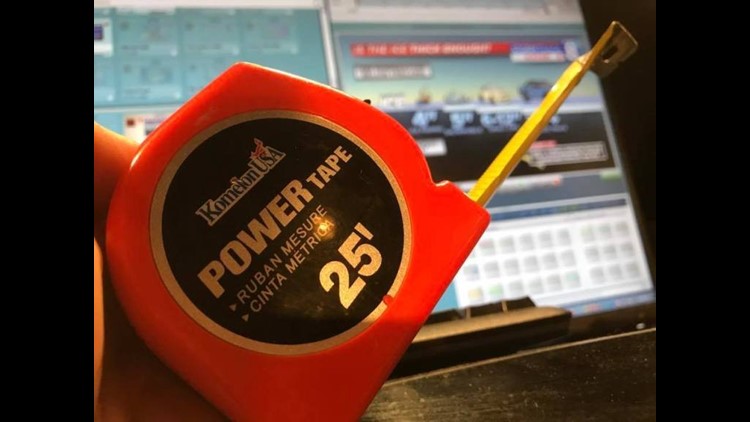Ask any ice fisherman and chances are they have a tape measure in their pocket for two reasons: to measure the length of the catch and to measure the thickness of the ice.
After drilling a hole in the ice, put the tape through the hole using the shiny, metal end to latch onto the underside of the ice. Then, read the thickness of the ice from the side.
According to the Department of Natural Resources, 12-15 inches of solid ice is needed to safely drive a truck onto a lake or pond. 8-12 inches is needed for normal passenger vehicles. For snowmobiling, a minimum of 5 inches is recommended. And finally, for anyone walking or ice-fishing, 4 inches is what is needed to make the ice safe.


4" to walk
8" to drive
This rule of thumb is only good for non-moving water. Rivers, creeks, and streams are never safe to walk on and there's no way to accurately measure the thickness of ice because it can vary due to water currents.
Also it's important to note that most automobile insurance policies only cover vehicles that are on land.
-Meteorologist Eric Sorensen



